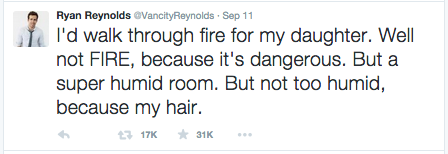Like any young boy, I went through phases about what I was convinced I was going to do with my life. When I was 10, I was sure I wanted to repair cars for a living. When I was 12, I wanted to be a musician after I first picked up the guitar, and by the time I was 22 I had been introduced to the wonderful world of public relations.
The car thing fell by the wayside, but the music has always been a constant – I’ve been playing at local shows with a band since I was 14. Of course, times have changed and the advent of YouTube and other online platforms have made things a lot more convenient for musicians to get themselves out there.
Along the way, I’ve met a lot of people and picked up a thing or two, be it about making music or the art of connecting with people and audiences. Thanks to my chosen career in PR, I’ve been able to apply a lot of what I’ve learned into my music and managing the profile of my band, and vice versa.
1. Messaging
Messaging in this context refers to what your audience takes away from listening to you, which happens to be a very big component in PR. How do I explain my music to an individual in a way that is most appealing to them? I came up with a formula and translated it into the context of PR:
- Relevance
How do I convince the organiser I am relevant to their event? What relevance does my music have to the audience?
Similarly in PR, how do I craft my message in a way that’s most relevant to the audience or media? Would this media be interested in the business aspect of my client or the R&D done for my client’s product or service?
- Tone
Part of the beauty of playing music in a small community is having the chance to meet people of different ages and backgrounds. In order to better relay my key messages, I use different analogies and references to get them across.
Just like in PR, depending on who you are talking to, your choice of words have to be picked carefully and need to be tailored to engage various individuals.
- Engagement
What makes some music more popular than others? I’ve always believed that it’s a result of how that music subconsciously relates to a person one way or another.
When it comes to PR, I translate that principle and take a step back before engaging with people, by researching about them before speaking to them. That way, it allows me to better relate my messages to their interest and seamlessly advocate the mutual benefits.
2. Always be ready
As the great Ronda Rousey said, “I don’t train to get ready, I train to stay ready”.
It’s not uncommon for musicians to be booked at the very last moment as a replacement. The challenge lies in getting the band ready in time to put up nothing short of a spectacular show, because that’s all that matters.
Similarly in PR, it’s not unheard of for clients to request for a press release to be done and blasted the next day. Just like the audience at a music festival, all that matters is getting the job done. This is where I realised that systems and processes in are important to get things done in the most accurate and time efficient way. Who will write the release? Who will collate a media list? Who will pitch?
3. Sincerity
Last but not least, being sincere goes a long way and usually has a big part to play in the art of convincing. Everyone can tell when someone is not sincere, and faking it ‘til you make it will never work when you’re in it for the long haul. By being genuine in your cause, you will find yourself adopting the right tone whilst relating well to your audience.
In PR, we meet different people all the time and first impressions are somewhat of a big deal. One way to combat the potential problem of being misconstrued is to be sincere – that alone subconsciously sets the mind on the right path.
If you’re interested in exploring what a PR strategy can do for your business, get in touch with us at [email protected]








